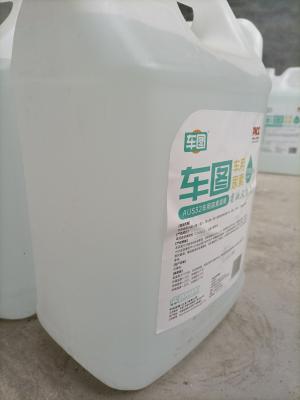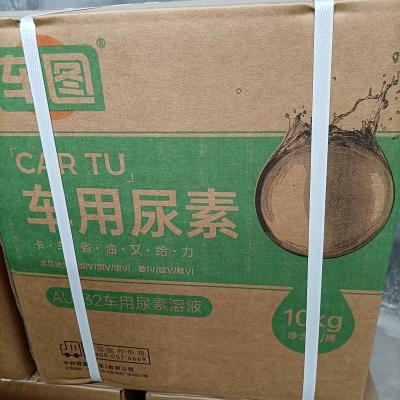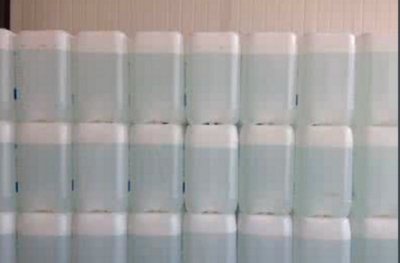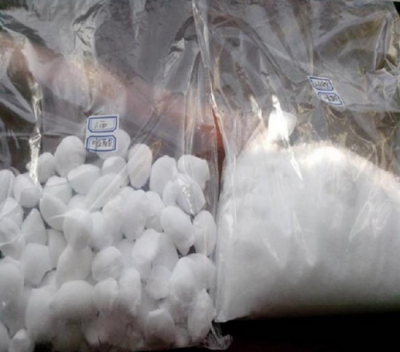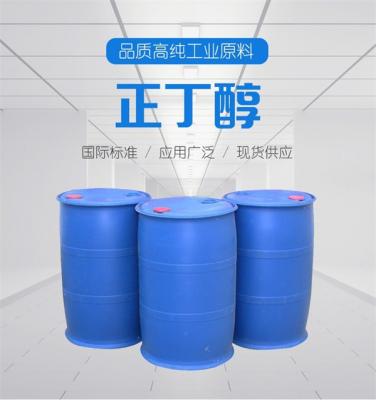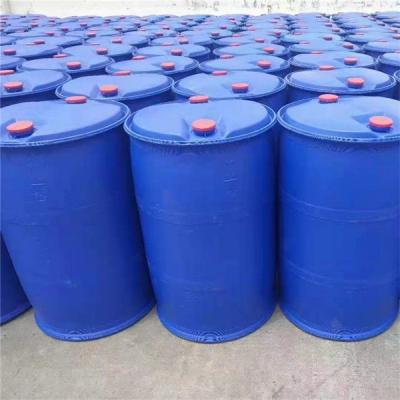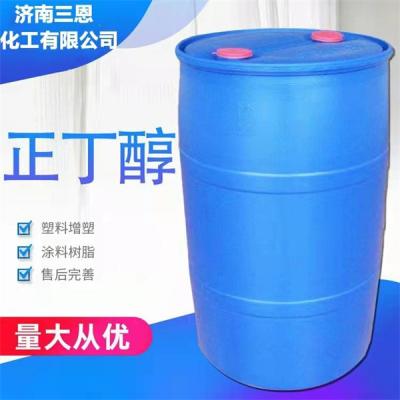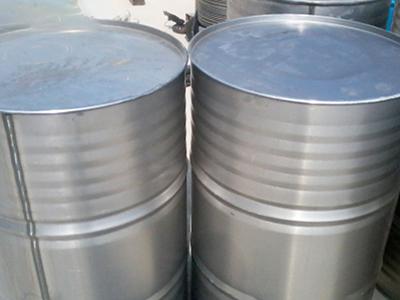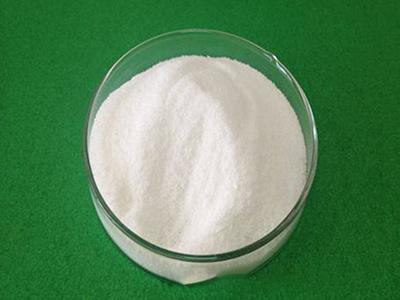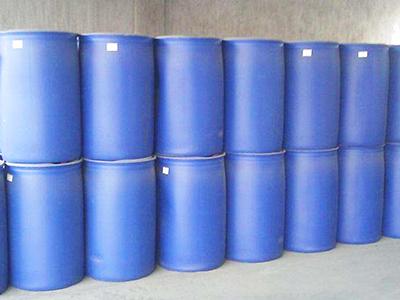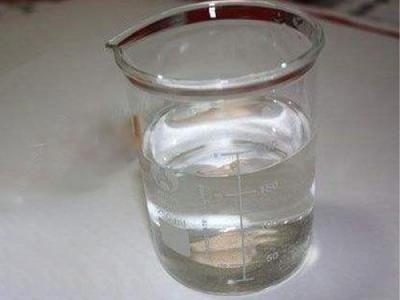Chemical Products
This product is the standard configuration of SCR technology, the solution concentration is 32.5% 0.7%, which can effectively reduce exhaust pollution and ensure engine efficiency
;8-stage pretreatment + RO reverse osmosis technology + EDI electrodeionization water purification technology + high-precision filtration and purification to ensure the purity of the solution from the source,
Delay SCR scaling, protect the urea pump and pipeline; select ultra-high-purity urea particles, made through multiple purification processes, long-term maintenance of the system and catalyst activity, and prolong the service life of the SCR system
;8-stage pretreatment + RO reverse osmosis technology + EDI electrodeionization water purification technology + high-precision filtration and purification to ensure the purity of the solution from the source,
Delay SCR scaling, protect the urea pump and pipeline; select ultra-high-purity urea particles, made through multiple purification processes, long-term maintenance of the system and catalyst activity, and prolong the service life of the SCR system
This product is the standard configuration of SCR technology, the solution concentration is 32.5% 0.7%, which can effectively reduce exhaust pollution and ensure engine efficiency
;8-stage pretreatment + RO reverse osmosis technology + EDI electrodeionization water purification technology + high-precision filtration and purification to ensure the purity of the solution from the source,
Delay SCR scaling, protect the urea pump and pipeline; select ultra-high-purity urea particles, made through multiple purification processes, long-term maintenance of the system and catalyst activity, and prolong the service life of the SCR system
Contact now
;8-stage pretreatment + RO reverse osmosis technology + EDI electrodeionization water purification technology + high-precision filtration and purification to ensure the purity of the solution from the source,
Delay SCR scaling, protect the urea pump and pipeline; select ultra-high-purity urea particles, made through multiple purification processes, long-term maintenance of the system and catalyst activity, and prolong the service life of the SCR system
Car urea is an essential product for heavy-duty diesel vehicles to meet the National IV emission standards. Vehicle urea refers to an aqueous urea solution with a urea concentration of 32.5% and ultrapure water as the solvent. The raw materials are urea crystals and ultrapure water. For diesel vehicles such as heavy trucks and passenger cars to meet the National IV emission standards, a suitable SCR system must be selected for exhaust gas treatment, and this system must use urea solution to treat nitrogen oxides in the exhaust gas. Therefore, urea solution for vehicles has become an essential product for heavy-duty trucks and passenger cars to meet the National IV emission standards.
Car urea is an essential product for heavy-duty diesel vehicles to meet the National IV emission standards. Vehicle urea refers to an aqueous urea solution with a urea concentration of 32.5% and ultrapure water as the solvent. The raw materials are urea crystals and ultrapure water. For diesel vehicles such as heavy trucks and passenger cars to meet the National IV emission standards, a suitable SCR system must be selected for exhaust gas treatment, and this system must use urea solution to treat nitrogen oxides in the exhaust gas. Therefore, urea solution for vehicles has become an essential product for heavy-duty trucks and passenger cars to meet the National IV emission standards.
Contact now
For diesel vehicles such as heavy trucks and passenger cars to meet the National IV emission standards, a suitable SCR system must be selected for exhaust gas treatment, and this system must use urea solution to treat nitrogen oxides in the exhaust gas. Therefore, urea solution for vehicles has become an essential product for heavy-duty trucks and passenger cars to meet the National IV emission standards.
For diesel vehicles such as heavy trucks and passenger cars to meet the National IV emission standards, a suitable SCR system must be selected for exhaust gas treatment, and this system must use urea solution to treat nitrogen oxides in the exhaust gas. Therefore, urea solution for vehicles has become an essential product for heavy-duty trucks and passenger cars to meet the National IV emission standards.
Contact now
The melting point is 13.5°C, the boiling point is 140.9°C, and the density (20/4°C) is 1.0611g/cm3. The chemical nature is lively. It is easy to polymerize in air and can be reduced to propionic acid by hydrogenation. Addition with hydrogen chloride generates 2-chloropropionic acid. Used in the preparation of acrylic resins and other organic synthesis. It is made by oxidation of acrolein or hydrolysis of acrylonitrile, or made by carbon monoxide, acetylene and water under the action of nickel catalyst.
The melting point is 13.5°C, the boiling point is 140.9°C, and the density (20/4°C) is 1.0611g/cm3. The chemical nature is lively. It is easy to polymerize in air and can be reduced to propionic acid by hydrogenation. Addition with hydrogen chloride generates 2-chloropropionic acid. Used in the preparation of acrylic resins and other organic synthesis. It is made by oxidation of acrolein or hydrolysis of acrylonitrile, or made by carbon monoxide, acetylene and water under the action of nickel catalyst.
Contact now
1. Used to produce 1,4-butanediol γ- Butyrolactone, tetrahydrofuran, succinic acid, unsaturated polyester resin, alkyd resin and other raw materials are also used in and pesticides.
2. Act as collector in metal beneficiation.
3. It is used in organic synthesis and also as an intermediate of synthetic fiber.
4. Maleic anhydride is an important basic raw material of unsaturated organic anhydride. In pesticide production, maleic anhydride is used to synthesize diethyl maleate, the intermediate of organophosphorus insecticide malathion, 1-phenyl-3,6-dihydroxypyridazine, the intermediate of pyridazinon, and the intermediate of pyrethroid insecticide permethrin, fungicide and captan. In addition, it is also used to produce unsaturated polyester resin and ink additives.
5. It is mainly used to produce unsaturated polyester resin, alkyd resin and long-acting iodamine.
6. Maleic anhydride (108-31-6) is a commonly used and important basic organic chemical raw material.
2. Act as collector in metal beneficiation.
3. It is used in organic synthesis and also as an intermediate of synthetic fiber.
4. Maleic anhydride is an important basic raw material of unsaturated organic anhydride. In pesticide production, maleic anhydride is used to synthesize diethyl maleate, the intermediate of organophosphorus insecticide malathion, 1-phenyl-3,6-dihydroxypyridazine, the intermediate of pyridazinon, and the intermediate of pyrethroid insecticide permethrin, fungicide and captan. In addition, it is also used to produce unsaturated polyester resin and ink additives.
5. It is mainly used to produce unsaturated polyester resin, alkyd resin and long-acting iodamine.
6. Maleic anhydride (108-31-6) is a commonly used and important basic organic chemical raw material.
1. Used to produce 1,4-butanediol γ- Butyrolactone, tetrahydrofuran, succinic acid, unsaturated polyester resin, alkyd resin and other raw materials are also used in and pesticides.
2. Act as collector in metal beneficiation.
3. It is used in organic synthesis and also as an intermediate of synthetic fiber.
4. Maleic anhydride is an important basic raw material of unsaturated organic anhydride. In pesticide production, maleic anhydride is used to synthesize diethyl maleate, the intermediate of organophosphorus insecticide malathion, 1-phenyl-3,6-dihydroxypyridazine, the intermediate of pyridazinon, and the intermediate of pyrethroid insecticide permethrin, fungicide and captan. In addition, it is also used to produce unsaturated polyester resin and ink additives.
5. It is mainly used to produce unsaturated polyester resin, alkyd resin and long-acting iodamine.
6. Maleic anhydride (108-31-6) is a commonly used and important basic organic chemical raw material.
Contact now
2. Act as collector in metal beneficiation.
3. It is used in organic synthesis and also as an intermediate of synthetic fiber.
4. Maleic anhydride is an important basic raw material of unsaturated organic anhydride. In pesticide production, maleic anhydride is used to synthesize diethyl maleate, the intermediate of organophosphorus insecticide malathion, 1-phenyl-3,6-dihydroxypyridazine, the intermediate of pyridazinon, and the intermediate of pyrethroid insecticide permethrin, fungicide and captan. In addition, it is also used to produce unsaturated polyester resin and ink additives.
5. It is mainly used to produce unsaturated polyester resin, alkyd resin and long-acting iodamine.
6. Maleic anhydride (108-31-6) is a commonly used and important basic organic chemical raw material.
It is a solvent for a variety of coatings and a raw material for preparing dibutyl phthalate, a plasticizer. It is also used in the manufacture of butyl acrylate, butyl acetate, ethylene glycol butyl ether,
It is a solvent for a variety of coatings and a raw material for preparing dibutyl phthalate, a plasticizer. It is also used in the manufacture of butyl acrylate, butyl acetate, ethylene glycol butyl ether,
Contact now
It is also used in the manufacture of butyl acrylate, butyl acetate, ethylene glycol butyl ether, as an extractant for organic synthesis intermediates and biochemical drugs, and in the manufacture of surfactants.
It is also used in the manufacture of butyl acrylate, butyl acetate, ethylene glycol butyl ether, as an extractant for organic synthesis intermediates and biochemical drugs, and in the manufacture of surfactants.
Contact now
It is a solvent for a variety of coatings and a raw material for preparing dibutyl phthalate, a plasticizer. It is also used in the manufacture of butyl acrylate, butyl acetate, ethylene glycol butyl ether, as an extractant for organic synthesis intermediates and biochemical drugs, and in the manufacture of surfactants.N-butanol is a colorless, transparent and alcoholic liquid.
It is a solvent for a variety of coatings and a raw material for preparing dibutyl phthalate, a plasticizer. It is also used in the manufacture of butyl acrylate, butyl acetate, ethylene glycol butyl ether, as an extractant for organic synthesis intermediates and biochemical drugs, and in the manufacture of surfactants.N-butanol is a colorless, transparent and alcoholic liquid.
Contact now
it can also be used as high octane gasoline components, is an important raw material for organic chemicals. It can also be used to remove the bitumen of the body. The hospital pathology is primarily used for tissue, slice of pilot and dewaxing.
it can also be used as high octane gasoline components, is an important raw material for organic chemicals. It can also be used to remove the bitumen of the body. The hospital pathology is primarily used for tissue, slice of pilot and dewaxing.
Contact now
citric acid is without problems soluble in water and ethanol, its solubility is 59% at 20℃, and the ph of its 2% aqueous solution is 2.1.
citric acid is without problems soluble in water and ethanol, its solubility is 59% at 20℃, and the ph of its 2% aqueous solution is 2.1.
Contact now
Chemical nature:
Forbidden qualitative: strong oxidizing agent, strong reducing agent, strong acid, strong base.
Ecological nature:
Ecotoxicity
EC50: 1.2 ~ 1.51mg / L (luminous bacteria, microtox toxicity test)
Biodegradability
Miti-I test, initial concentration of 100 mg / L, sludge concentration 30 mg / L, 2 weeks later degraded 77%.
Non-biodegradability
In the air, when the hydroxyl radical concentration is 5.00 × 105 / cm3, the degradation of the half-life is 7.8d (theory).
Other harmful effects
The material is damaged by the environment and should pay special attention to the pollution of the water.
Forbidden qualitative: strong oxidizing agent, strong reducing agent, strong acid, strong base.
Ecological nature:
Ecotoxicity
EC50: 1.2 ~ 1.51mg / L (luminous bacteria, microtox toxicity test)
Biodegradability
Miti-I test, initial concentration of 100 mg / L, sludge concentration 30 mg / L, 2 weeks later degraded 77%.
Non-biodegradability
In the air, when the hydroxyl radical concentration is 5.00 × 105 / cm3, the degradation of the half-life is 7.8d (theory).
Other harmful effects
The material is damaged by the environment and should pay special attention to the pollution of the water.
Chemical nature:
Forbidden qualitative: strong oxidizing agent, strong reducing agent, strong acid, strong base.
Ecological nature:
Ecotoxicity
EC50: 1.2 ~ 1.51mg / L (luminous bacteria, microtox toxicity test)
Biodegradability
Miti-I test, initial concentration of 100 mg / L, sludge concentration 30 mg / L, 2 weeks later degraded 77%.
Non-biodegradability
In the air, when the hydroxyl radical concentration is 5.00 × 105 / cm3, the degradation of the half-life is 7.8d (theory).
Other harmful effects
The material is damaged by the environment and should pay special attention to the pollution of the water.
Contact now
Forbidden qualitative: strong oxidizing agent, strong reducing agent, strong acid, strong base.
Ecological nature:
Ecotoxicity
EC50: 1.2 ~ 1.51mg / L (luminous bacteria, microtox toxicity test)
Biodegradability
Miti-I test, initial concentration of 100 mg / L, sludge concentration 30 mg / L, 2 weeks later degraded 77%.
Non-biodegradability
In the air, when the hydroxyl radical concentration is 5.00 × 105 / cm3, the degradation of the half-life is 7.8d (theory).
Other harmful effects
The material is damaged by the environment and should pay special attention to the pollution of the water.
Colorless tasteless oily liquid, boiling point 343 ° C (0.101 MP), flash point (open cup) 204 ° C, freezing point -80 ° C, volatile rate 0.00009 g / cm, hour (105 ° C), hydrolysis rate 0.1% (100) ° C, 6 hours), soluble in most organic solvents. Resin compatible with polyvinyl chloride, polystyrene, vinyl chloride-vinyl acetate copolymer, nitrocellulose, ethylcellulose, polyvinyl butyal butyal. It is compatible with cellulose acetate and phrochloride cellulose.
Colorless tasteless oily liquid, boiling point 343 ° C (0.101 MP), flash point (open cup) 204 ° C, freezing point -80 ° C, volatile rate 0.00009 g / cm, hour (105 ° C), hydrolysis rate 0.1% (100) ° C, 6 hours), soluble in most organic solvents. Resin compatible with polyvinyl chloride, polystyrene, vinyl chloride-vinyl acetate copolymer, nitrocellulose, ethylcellulose, polyvinyl butyal butyal. It is compatible with cellulose acetate and phrochloride cellulose.
Contact now
This product is the standard configuration of SCR technology, the solution concentration is 32.5% 0.7%, which can effectively reduce exhaust pollution and ensure engine efficiency
;8-stage pretreatment + RO reverse osmosis technology + EDI electrodeionization water purification technology + high-precision filtration and purification to ensure the purity of the solution from the source,
Delay SCR scaling, protect the urea pump and pipeline; select ultra-high-purity urea particles, made through multiple purification processes, long-term maintenance of the system and catalyst activity, and prolong the service life of the SCR system
Contact Now
;8-stage pretreatment + RO reverse osmosis technology + EDI electrodeionization water purification technology + high-precision filtration and purification to ensure the purity of the solution from the source,
Delay SCR scaling, protect the urea pump and pipeline; select ultra-high-purity urea particles, made through multiple purification processes, long-term maintenance of the system and catalyst activity, and prolong the service life of the SCR system
Car urea is an essential product for heavy-duty diesel vehicles to meet the National IV emission standards. Vehicle urea refers to an aqueous urea solution with a urea concentration of 32.5% and ultrapure water as the solvent. The raw materials are urea crystals and ultrapure water. For diesel vehicles such as heavy trucks and passenger cars to meet the National IV emission standards, a suitable SCR system must be selected for exhaust gas treatment, and this system must use urea solution to treat nitrogen oxides in the exhaust gas. Therefore, urea solution for vehicles has become an essential product for heavy-duty trucks and passenger cars to meet the National IV emission standards.
Contact Now
For diesel vehicles such as heavy trucks and passenger cars to meet the National IV emission standards, a suitable SCR system must be selected for exhaust gas treatment, and this system must use urea solution to treat nitrogen oxides in the exhaust gas. Therefore, urea solution for vehicles has become an essential product for heavy-duty trucks and passenger cars to meet the National IV emission standards.
Contact Now
The melting point is 13.5°C, the boiling point is 140.9°C, and the density (20/4°C) is 1.0611g/cm3. The chemical nature is lively. It is easy to polymerize in air and can be reduced to propionic acid by hydrogenation. Addition with hydrogen chloride generates 2-chloropropionic acid. Used in the preparation of acrylic resins and other organic synthesis. It is made by oxidation of acrolein or hydrolysis of acrylonitrile, or made by carbon monoxide, acetylene and water under the action of nickel catalyst.
Contact Now
1. Used to produce 1,4-butanediol γ- Butyrolactone, tetrahydrofuran, succinic acid, unsaturated polyester resin, alkyd resin and other raw materials are also used in and pesticides.
2. Act as collector in metal beneficiation.
3. It is used in organic synthesis and also as an intermediate of synthetic fiber.
4. Maleic anhydride is an important basic raw material of unsaturated organic anhydride. In pesticide production, maleic anhydride is used to synthesize diethyl maleate, the intermediate of organophosphorus insecticide malathion, 1-phenyl-3,6-dihydroxypyridazine, the intermediate of pyridazinon, and the intermediate of pyrethroid insecticide permethrin, fungicide and captan. In addition, it is also used to produce unsaturated polyester resin and ink additives.
5. It is mainly used to produce unsaturated polyester resin, alkyd resin and long-acting iodamine.
6. Maleic anhydride (108-31-6) is a commonly used and important basic organic chemical raw material.
Contact Now
2. Act as collector in metal beneficiation.
3. It is used in organic synthesis and also as an intermediate of synthetic fiber.
4. Maleic anhydride is an important basic raw material of unsaturated organic anhydride. In pesticide production, maleic anhydride is used to synthesize diethyl maleate, the intermediate of organophosphorus insecticide malathion, 1-phenyl-3,6-dihydroxypyridazine, the intermediate of pyridazinon, and the intermediate of pyrethroid insecticide permethrin, fungicide and captan. In addition, it is also used to produce unsaturated polyester resin and ink additives.
5. It is mainly used to produce unsaturated polyester resin, alkyd resin and long-acting iodamine.
6. Maleic anhydride (108-31-6) is a commonly used and important basic organic chemical raw material.
It is a solvent for a variety of coatings and a raw material for preparing dibutyl phthalate, a plasticizer. It is also used in the manufacture of butyl acrylate, butyl acetate, ethylene glycol butyl ether,
Contact Now
It is also used in the manufacture of butyl acrylate, butyl acetate, ethylene glycol butyl ether, as an extractant for organic synthesis intermediates and biochemical drugs, and in the manufacture of surfactants.
Contact Now
It is a solvent for a variety of coatings and a raw material for preparing dibutyl phthalate, a plasticizer. It is also used in the manufacture of butyl acrylate, butyl acetate, ethylene glycol butyl ether, as an extractant for organic synthesis intermediates and biochemical drugs, and in the manufacture of surfactants.N-butanol is a colorless, transparent and alcoholic liquid.
Contact Now
it can also be used as high octane gasoline components, is an important raw material for organic chemicals. It can also be used to remove the bitumen of the body. The hospital pathology is primarily used for tissue, slice of pilot and dewaxing.
Contact Now
citric acid is without problems soluble in water and ethanol, its solubility is 59% at 20℃, and the ph of its 2% aqueous solution is 2.1.
Contact Now
Chemical nature:
Forbidden qualitative: strong oxidizing agent, strong reducing agent, strong acid, strong base.
Ecological nature:
Ecotoxicity
EC50: 1.2 ~ 1.51mg / L (luminous bacteria, microtox toxicity test)
Biodegradability
Miti-I test, initial concentration of 100 mg / L, sludge concentration 30 mg / L, 2 weeks later degraded 77%.
Non-biodegradability
In the air, when the hydroxyl radical concentration is 5.00 × 105 / cm3, the degradation of the half-life is 7.8d (theory).
Other harmful effects
The material is damaged by the environment and should pay special attention to the pollution of the water.
Contact Now
Forbidden qualitative: strong oxidizing agent, strong reducing agent, strong acid, strong base.
Ecological nature:
Ecotoxicity
EC50: 1.2 ~ 1.51mg / L (luminous bacteria, microtox toxicity test)
Biodegradability
Miti-I test, initial concentration of 100 mg / L, sludge concentration 30 mg / L, 2 weeks later degraded 77%.
Non-biodegradability
In the air, when the hydroxyl radical concentration is 5.00 × 105 / cm3, the degradation of the half-life is 7.8d (theory).
Other harmful effects
The material is damaged by the environment and should pay special attention to the pollution of the water.
Colorless tasteless oily liquid, boiling point 343 ° C (0.101 MP), flash point (open cup) 204 ° C, freezing point -80 ° C, volatile rate 0.00009 g / cm, hour (105 ° C), hydrolysis rate 0.1% (100) ° C, 6 hours), soluble in most organic solvents. Resin compatible with polyvinyl chloride, polystyrene, vinyl chloride-vinyl acetate copolymer, nitrocellulose, ethylcellulose, polyvinyl butyal butyal. It is compatible with cellulose acetate and phrochloride cellulose.
Contact Now



